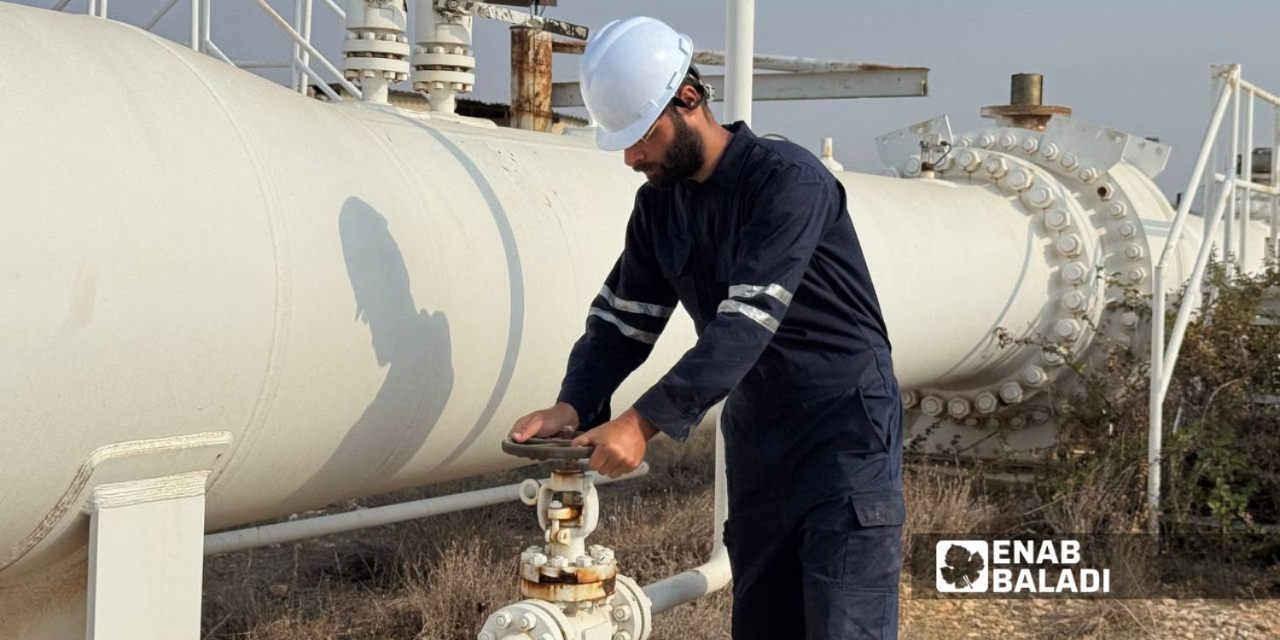Egypt is preparing to export 650 million cubic meters of gas annually to Lebanon via Syria through the Arab Gas Pipeline by the end of this year.
Saudi-owned Asharq TV quoted an unnamed Egyptian government official on Tuesday evening, November 4, as saying that the lifting of U.S. sanctions on Syria had “removed the last obstacle to exporting gas to Lebanon.”
On May 23, the U.S. Department of the Treasury issued a Syria sanctions waiver in line with the U.S. President’s announcement suspending all sanctions, with General License No. 25 authorizing transactions otherwise prohibited under the Syria sanctions regulations, effectively lifting sanctions on Syria.
According to the official, companies and states participating in the Arab Gas Pipeline initiative would previously have been subject to financial and trade sanctions if they proceeded with exporting gas to Lebanon via Syria.
The official added that the necessary financial and technical procedures to begin exports have been completed.
Egypt requested U.S. guarantees that it would not be exposed to sanctions imposed on Syria if the project is implemented, the official said.
Egypt’s Ministry of Petroleum and the Egyptian Natural Gas Holding Company (EGAS) did not respond to Asharq’s requests for comment.
Lebanese Energy Minister Joseph Sadeh told the same channel on November 3 that Lebanon is working to update the electricity interconnection agreement with Jordan and Syria, with a trilateral meeting scheduled for November 20 between the three energy ministers, the first of its kind in years.
He added that one of the steps to address Lebanon’s electricity crisis includes power interconnection and gas pipelines with neighboring countries such as Egypt, Syria, and Jordan.
He explained that Egypt and Lebanon have signed a memorandum of understanding for intensive technical and ministerial coordination to work on the different tracks for gas and the Arab Gas Pipeline, noting there are upcoming meetings to activate the memorandum.
An agreement stalled by sanctions
In June 2022, Lebanon, Syria, and Egypt signed an agreement to transport 650 million cubic meters of gas annually from Egypt to Lebanon via Syria.
At the time, former Lebanese Energy Minister Walid Fayyad said the project would provide up to four additional hours of electricity and that with the signing of the agreement, Lebanon, Egypt, Jordan, and Syria had completed all steps necessary to secure electricity for Lebanon.
He confirmed that Lebanon was awaiting final U.S. guarantees related to sanctions to implement the project.
On December 2, 2021, former U.S. State Department regional spokesperson Samuel Warberg said Washington had engaged the governments of Jordan, Egypt, and Lebanon, as well as the World Bank, to ensure that energy support for Lebanon aligned with U.S. foreign policy and addressed any potential sanctions concerns.
Warberg added that the United States had not lifted or eased any Syria-related U.S. sanctions to facilitate the Arab Gas Pipeline agreement, stressing that the agreements were intended to benefit the Lebanese people, not the Syrian regime.
Former Egyptian Petroleum Minister Tarek el-Molla later said Egypt was still seeking U.S. approval to supply Lebanon with energy without falling afoul of the Caesar Act, according to remarks he made to Al-Monitor, published on December 15, 2021, and later removed.
What is the Arab Gas Pipeline?
The Arab Gas Pipeline is one of the most important economic projects in the Eastern Mediterranean, designed to export Egyptian gas to the Levant and from there to Europe.
It was agreed upon in 2000, and construction began in 2003. Once completed, it would reach 1,200 kilometers at a cost of 1.2 billion dollars, with a capacity to transport more than 10 billion cubic meters of gas annually.
The pipeline runs through Egypt, Israel, Jordan, Lebanon, and Syria, and ends in Turkey, making it the first regional project to span three continents: Africa, Asia, and Europe.
Implementation was planned in four phases, starting in Egypt, passing through Jordan to Syria, and then carrying gas to Turkey and on to Europe. However, the section between Syria and Turkey was not completed due to the outbreak of the Syrian uprising in 2011.
Since December 2011, the pipeline has been targeted in Egypt, and in Syria, it has been hit by several explosions that caused power outages for hours before repairs. In Syria, the line passes by several thermal power stations, including Deir Ali near Damascus, Tishreen in Latakia, and the al-Rayyan gas compression company in Homs.
Article Source: EnabBaladi.net







